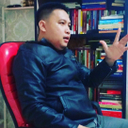Tentang KamiPedoman Media SiberKetentuan & Kebijakan PrivasiPanduan KomunitasPeringkat PenulisCara Menulis di kumparanInformasi Kerja SamaBantuanIklanKarir
2025 © PT Dynamo Media Network
Version 1.100.8
Konten dari Pengguna
Representative Presidential Election in the New Order Regime: an Analysis
13 Maret 2021 6:56 WIB
Tulisan dari Boy Anugerah LUSOR tidak mewakili pandangan dari redaksi kumparan
ADVERTISEMENT
To understand in-depth the practice of presidential elections in the past, it is important to first understand the role and authority of the People’s Consultative Assembly as the state institution that organizes presidential elections. According to article 1 of the constitution before the first amendment, the People’s Consultative Assembly was the highest state institution in the Republic of Indonesia that held people’s sovereignty. Then, in accordance with article 2 of the constitution prior to the first amendment, the People’s Consultative Assembly consisted of members of the House of Representatives, Regional Representatives, and also Group Representatives, whose membership was regulated by law. The People’s Consultative Assembly would conduct a parliamentary session at least once in five years in the capital city of the Republic of Indonesia. All decisions of the People’s Consultative Assembly would be determined by the most popular voting mechanism.
ADVERTISEMENT
The position and level as the highest state institution had brought several implications to the governmental practices in the past. First, the People’s Consultative Assembly was able to regulate the position and authority of other state institutions with a lower level of authority. All regulations were implemented by changing and stating the constitution and by producing decisions of the People’s Consultative Assembly, which posted the highest level in the hierarchy of state regulations. In short, there was no system of checks and balances among state institutions. Second, the People’s Consultative Assembly was not assessed, controlled, and handled by other state institutions.
Even the constitution could not regulate the People’s Consultative Assembly because the substances of the constitution were determined by the People’s Consultative Assembly and it was possible to be revised anytime by the People’s Consultative Assembly. Third, all decisions of the People’s Consultative Assembly might conflict with the principles of democracy and human rights. This proposition is relevant to the practices in the past. In 1963, the People’s Consultative Assembly appointed President Soekarno as president for life. This decision has contravened the constitution which limits the president’s term of office to only five years. It was also contradictory to the principles of democracy (Rohmat, 2016).
ADVERTISEMENT
There was an interesting fact about the People’s Consultative Assembly in the past. Although normatively having a position as the highest state institution, in the real political activities, especially in the era of President Soekarno and Soeharto, the role could not be implemented. What really happened was the fact that the president had more significant roles, including the authority to determine directions and policies to be taken by the People’s Consultative Assembly. This was caused by the constitution that put the president as having dominant authority and the strongest position so-called executive heavy. In practice, the president had the authority to determine the structure and composition of the People’s Consultative Assembly.
ADVERTISEMENT
President could determine who could be appointed to fill the position as a member through the regional representative and group representative channels. President had the authority to appoint who could be the chairman and vice-chairman of the People’s Consultative Assembly. Furthermore, the president also had the authority to determine all matters that had to be decided by the People’s Consultative Assembly. Besides, members of the House of Representatives who would become members of the People’s Consultative Assembly had to pass a very strict screening system in the era of President Soeharto (Rohmat, 2016).
In the past, the People’s Consultative Assembly held strong authority to elect the president and vice president. It was guaranteed and explicitly stated by the constitution. According to article 6 paragraph 2 of the constitution prior to the first amendment, the president and vice president were elected by the People’s Consultative Assembly through the most popular vote mechanism. This regulation had specific consequences. The elected president and vice president had to be responsible to the People’s Consultative Assembly as the holder of the people’s mandate and the official institution to elect the president and vice president.
ADVERTISEMENT
That consequence had the potential to bring about another consequence, namely that the president and vice president could be impeached by the People’s Consultative Assembly in their ruling period if they violate “state directives”. Another significant thing in the constitution before the first amendment was that the president and vice president would conduct the presidency for five years. Nevertheless, there was no regulation to limit the period of the presidency. Consequently, President Soeharto governed Indonesia for 32 years without limitation of the ruling period.
The political reform that happened in 1998 has changed the practice in the governance of the Indonesian state. The people not only wanted to change the president from President Soeharto to a more democratic state leader, but they also wanted to have a more democratic political system that had the potential to expand public participation, including the general election system. People in that era also were eager to eradicate the malpractices in governance, which were practiced in the New Order era, such as corruption, collusion, and nepotism. Consequently, the post-reform government made amendments to the constitution, commencing in 1999.
ADVERTISEMENT
The amendments to the constitution have brought major changes in Indonesia’s constitutional system, including the role and authority of the People’s Consultative Assembly. The People’s Consultative Assembly no longer has the status as the highest state institution that distributes its power and authority to other state institutions. It is clearly stated in article 1 paragraph 1 of the third constitution, “The sovereignty is in the hands of the people and it is exercised due to the constitution”. Other authorities of the People’s Consultative Assembly due to the constitutional amendments are; changing and stating the constitution, inaugurating president and/or vice president, terminating president and/or vice president in his or her ruling period based on the constitution.
ADVERTISEMENT
The change in the position of the People’s Consultative Assembly from the highest state institution to a state institution, which has an equal position and level to other state institutions, such as the Presidential Institution, the House of Representatives, the Supreme Court, and also the State Audit Agency (so-called BPK RI), has changed Indonesia’s constitutional system from the vertical-hierarchical system, which is characterized by the supremacy of parliament, to the horizontal-functional system, which is characterized by the supremacy of constitution by implementing the principle of checks and balances mechanism (Rohmat, 2016).
This change has affected the authority of the People Consultative Assembly in order not to play dominant power and monopolize the authority and sovereignty of the people like in the past. This change also mandated the post-reform government to implement the supremacy of the constitution because Indonesia applies the constitutionalism principle. The constitutionalism principle itself is defined as a principle that puts the constitution at the highest level in the state and the main guidance for limiting powers and regulating the governance (Rohmat, 2016).
ADVERTISEMENT
Another most fundamental change in the third amendment of the constitution is the authority to elect the president and vice president. The authority is not in the hand of the People’s Consultative Assembly anymore, but in the hands of the people as direct voters in the direct presidential election. Referring to article 6A paragraph 1 of the third amended constitution, “president and vice president are elected in a pair and elected directly by the people”. Then, in the second paragraph of article 6A, “a pair of the president and vice president is proposed by a political party or a coalition of political parties participating in the general election before the execution of the general election”.
ADVERTISEMENT
This change has become a legitimacy for the post-reform government to conduct several direct presidential elections since 2004. Before the direct presidential election of 2004, the president and vice president were elected by the People’s Consultative Assembly by referring to the results of legislative elections conducted in 1971, 1977, 1982, 1987, 1992, and also 1997. Those elections were done in the era of President Soeharto. Looking at this practice, some people assume that what really happened in the past was not the practice of a pure presidential system, but it was a perverted presidential system, or even a semi-presidential system (Susanti, 2020).
The label as a perverted presidential system is not an exaggeration when it refers to the presidential elections practice in the past. The People’s Consultative Assembly appointed President Soekarno as president for life in 1963. The People’s Consultative Assembly also appointed President Soeharto as president for six periods through presidential elections in 1971, 1977, 1982, 1987, 1992, and 1997. Referring to the practices in the era of President Soeharto, the appointment of President Soeharto could be done because the structure and composition of the People’s Consultative Assembly were determined by President Soeharto.
ADVERTISEMENT
The structure and composition of the House of Representatives were dominated by the Republic of Indonesia Armed Forces and GOLKAR (the abbreviation for Golongan Karya), two political machines of President Soeharto. The members of the House of Representatives, who would become members of the People’s Consultative Assembly, had to pass a screening process which was applied by the new order regime. In the past era, the People’s Consultative Assembly showed that they were not independent in exercising their authority because they were just following the intentions of the president who was politically more powerful. Therefore, President Soeharto was always re-elected in seven sessions of the People’s Consultative Assembly. President Soeharto just agreed to quit his presidency after a massive wave of protest in May 1998.
ADVERTISEMENT
On the other hand, the authority to terminate the president and/or vice president was not limited by specific, clear, firm criteria and measures regulated in the constitution. In the constitution, it is stated that if the president and/or vice president are deemed to have violated “state directives’, then they will be processed for impeachment. The definition of “state directives” itself is unclear and highly subjective. It just follows the political will of the People’s Consultative Assembly.
This could happen because the People’s Consultative Assembly had a big political weight and was composed of the members of the House of Representatives, who were dominated by GOLKAR as President Soeharto’s political machine, and also elements of the Republic of Indonesia Armed Forces. Therefore, the reason for impeaching the president was much more political than legal. This can be seen in the cases of President Soekarno in 1967 and President Abdurrahman Wahid at the beginning of the reform era (Susanti, 2020). What really happened to President Abdurrahman Wahid was more caused by a flaw in the constitutional system than his mistakes as president (Wijaya, 2020).

